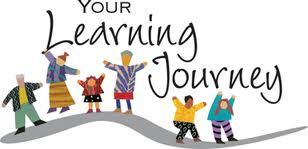
We recently concluded a learning journey (10 weeks long) to train some of our colleagues on ‘Basic Quality Tools’ & this blog is an attempt to share the mechanics of this social & blended learning journey.
The Context -As a large shared services organisation, our context for this learning journey was the need to drive operational quality & process improvements. The quality tools essentially are a fixed set of graphical techniques identified as being most helpful in troubleshooting issues pertaining to quality. The tools are called basic because they are suitable for people with little formal training in statistics.
Training Need – Enabling participants to use basic quality tools for process improvement. The need was to train the target group on using the following quality tools:
- Check sheets
- Scatter diagrams
- Control charts
- Histograms
- Fish bone diagrams
- Pareto diagrams
- Pert & Flow charts
- Critical path method
Target Group – Subject Matter Experts (technical experts who typically mentor the front line associates). They report into our first line of managers (Team Managers). The members in the target group were in the 4-5 year experience band with most of their experience in the offshore / outsourcing industry.The size of this target group was 60.
Learning Journey components -:
Pit-stop 1: TTT (Train the Trainer) for Line Managers (Instructor led): Learning becomes meaningful when the line managers are involved, so we started the journey by directly influencing the immediate managers of the target group. The line managers participated in an 6 hour long Instructor led ‘train the trainer’ workshop. The line managers were already trained on quality tools so the focus was more on providing them a structure for ‘transfer of knowledge’ rather than teaching them the tools. The Line Managers involvement was a ‘make or break’ component in this journey & the TTT calibrated them on the approach & the expectations from them.
Pit-stop 2: E-learning for the target group
We had designed 8 e-learning modules (15-20 mins each) to explain each of the quality tools. The design of the e-learning chunks was outsourced to one of our partners & took 3 weeks to complete. The target group (SMEs) were assigned all 8 E-learning modules & were expected to invest 30 mins every week to complete a module in the assigned order. Participants were asked to complete the weekly e-learning activity by end of business – Thursday of every week.
Pit-stop 3: Community Learning on Enterprise Social network (ESN)
We used our ESN- Chatter from Salesforce to this effect. A private group was created which hosted all the stakeholders i.e. participants, line managers, training team, selected senior leaders.
Each week, the community manager (in this case, a trainer), posted discussion questions based on the module that was to be consumed in that week. The questions were to check for knowledge & also to trigger conversations around lessons learnt & potential application of the tools to real scenarios. We asked our senior managers to participate & reflect on some of the comments. Participation from this layer of the organisation on the community thread really drove traffic. The community manager however played a critical role here by highlighting comments which were worthy of appreciation to this group of senior managers. This online community also hosted tweet-chat like events. Every Thursday, an Operations Manager (an expert on quality tools) hosted a 30 min micro-blogging session within Chatter to answer questions pertaining to the e-learning module of that week. The use of the internal social platform enabled us to embed the learning into their workflow & deliver micro-learning in a seamless way.
Pit-stop 4: Manager as a Coach
Each participant was asked to invest 30 mins every Friday for a discussion with their immediate manager. We had asked the managers to use the following 3 question framework to orchestrate this discussion:
Q 1 – Can you share any 2 takeaways from the e-learning module that you took this week?
Q 2 – Basis the conversations on chatter this week, what do you think your peers are finding valuable?
Q 3 – Where can you apply the tool that you have learnt this week?
The managers were held accountable for documenting this discussion & sharing it with the Operations Director on a weekly basis.
Pit-stop 5: Capstone Project
Effective Week 8, participants were grouped into teams of 4. The expectation was for them to use any 2 quality tools from the set of 8 that they had learnt during the journey & document their improvement ideas.Teams were given 2 weeks to complete this task (Week 8-10) & submit their plans to the Operations Director.These plans were reviewed by a panel comprising of Senior Managers & two teams were picked as winners.
Pit-stop 6: R&R + Completion
What gets rewarded gets repeated & it’s important to build appreciation as pit stopwithin the learning journey. We organised a small R&R event & handed out completion certificates to all the participants.The top 2 teams were awarded by the Operations Director. At the end of this journey, we had 15 potential improvement ideas from the 15 teams with the top 2 ideas being sponsored for implementation.
ROI & In summary:
Overall, each participant invested an equivalent of 16 hrs (roughly 1.5 hrs per week + project time) in this learning journey. It lasted 10 weeks & caused no interruption to business as usual activities. We had also budgeted for 12 hrs of the managers time (including the 6 hr TTT). Importantly, the journey got all critical stakeholders involved & accountable for each others success. The upfront investment on the outsourced e-learning work was significantly less than what running a 2 day workshop for 60 participants would have costed us. By the end, we also had 2 improvement ideas that were picked by senior management for implementation. These could potentially result in significant efficiency benefits.
Compare this to having pushed these participants into a 2 day long training session on ‘Quality Tools’ & the resultant effects. The answer to what works better is a no-brainer. This experience also reinforced my belief that no specific ingredient is better than the other in a learning blend & each plays a part in the success of the learning journey. In my role as a learning professional I have realised that our possibilities end only where our imagination does.
I am keen to hear your feedback on this approach & learn from you.
 Sunder Ramachandran is a highly energetic training leader with extensive experience in building capabilities for large teams in the offshore/outsourcing space. He is currently a Senior Training Manager with JLT Group, one of the world’s largest providers of insurance and employee benefits related advice, brokerage and associated services including an office of over 850 employees in Mumbai, India.
Sunder Ramachandran is a highly energetic training leader with extensive experience in building capabilities for large teams in the offshore/outsourcing space. He is currently a Senior Training Manager with JLT Group, one of the world’s largest providers of insurance and employee benefits related advice, brokerage and associated services including an office of over 850 employees in Mumbai, India.
Sunder’s articles on workplace learning have appeared in Indian & International media including The Economic Times, Hindu Business Line, Times Ascent, National HRD Newsletter, Rediff.com, Askmen.com, Top7business.com, Human Capital and HrmAsia.com. His articles can be read at http://www.scoop.it/t/learning-leader. He is passionate about social learning and blogs on the learning experiments that he is leading at http://sundertrg.tumblr.com
Sunder was a training entrepreneur for five years and has gained valuable experience on both the ‘Buy’ & ‘Sell’ side of the training business.. Connect with him on LinkedIn and on twitter@sundertrg.



0 Comments
You can be the first one to leave a comment.